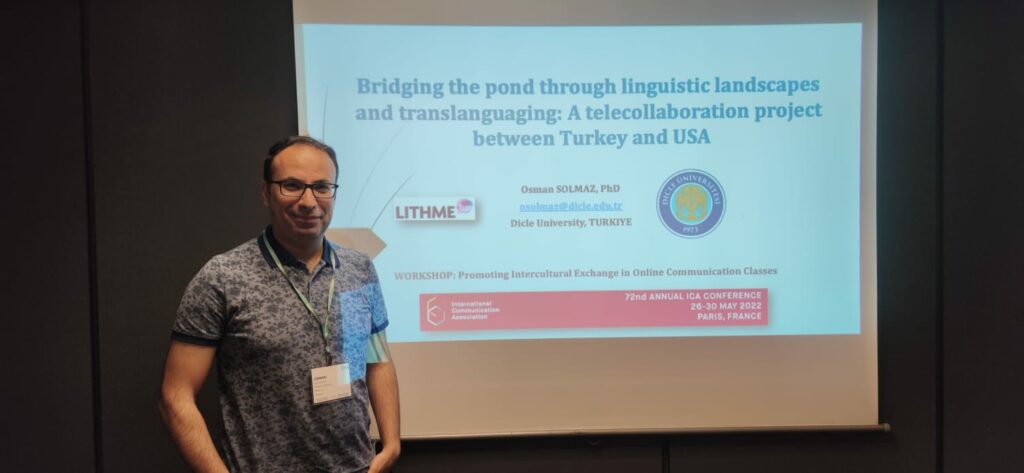A telecollaboration project between Turkey and USA
Language is all around us – coffee shop signs, bus stops, advertisements. These are tangible, “real
life” examples of language use, but can they be taken into language teaching classrooms? The main
criticism of language learning textbooks is usually that the language used in them doesn’t reflect
“real life” language use. This program helped to breach the gap between “real life” and classroom
context.
Osman Solmaz and his colleague Steve Przymus led a virtual collaboration for teacher candidates
from Turkey and the US. During the collaboration the students used their own language
environments and understanding of the linguistic landscapes as the starting point of their lesson
plans. The theory of linguistic landscapes describes the language in different spaces and what is the
sociolinguistic power of different languages – codes in various environments. The exchange of
the students’ ideas brought more understanding of both the Turkish and American environment and
enriched the dialogue. The teacher candidates explored their environments, so the participants
learned more through dialogue with other and the linguistic landscapes of each country than they
would have on their own. The students would write their lesson plans in cooperation with students
from the other participating countries.
The participants were knowledgeable and conscious of their environments and the language used in
different contexts in their local environment. However, the locality proved to be a challenge for the
non-local participants of the exchange. Because linguistic landscapes are a part of local spaces,
embedded in them are local belief-systems and ideas that needed to be decoded for their meaning.
Some signs didn’t exist in the other country; for example, political yard signs in the US were
puzzling to the Turkish participants.
The students were helped to develop their lesson plans with a specific format developed for
linguistic landscapes by Osman Solmaz, because the concept of linguistic landscapes itself was not
specifically developed with language teaching contexts in mind.
Because linguistic landscapes are not originally meant for language teaching, there needs to be a
framework to integrate linguistic landscape resources into classrooms. Osman Solmaz believes that these resources can be useful for language teaching because linguistic landscapes are everywhere, and they often reflect socio-cultural or linguistic diversity of a community. They exemplify symbols
and signs featuring language play and are everyday examples of the presence of English in English
language and non-English language settings. To meaningfully integrate these resources to language
teaching would bring “real life” examples into classrooms.

Solmaz, O., & Pryzmus, S. (2022). Bridging the pond through linguistic landscapes and
translanguaging: A telecollaboration project between Turkey and USA.
Paper presented at 72 nd
International Communication Association Conference as part of the BLUE SKY WORKSHOP:
Promoting Intercultural Exchange in Online Communication Classes, May 2022.
Solmaz, O., & Przymus, S. (Eds.) (2021). Linguistic Landscapes in English Language Teaching: A
Pedagogical Guidebook. Available from https://www.llineltproject.com/.

